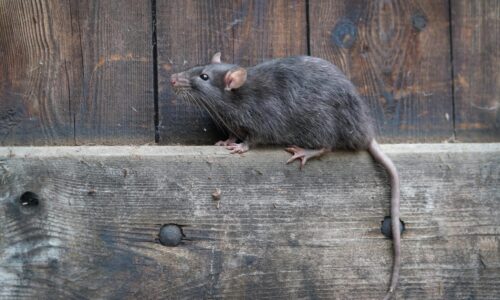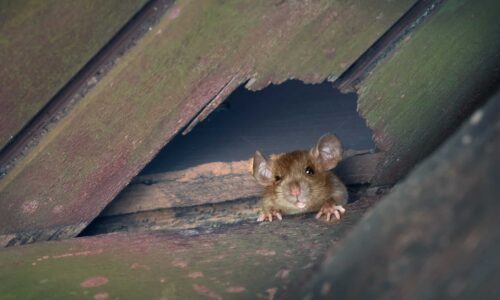Why Rodent Identification is Important for Homeowners
Rodents are among the most common pests found in New Zealand homes. While they might look similar at first glance, different rodent species require different approaches for control and removal. Identifying which type of rodent has invaded your home is crucial for taking the right action. Failing to do so can lead to ineffective treatments and ongoing infestations.
In this guide, we’ll cover the basics of rodent identification in NZ, focusing on the most common types of rats and mouse species found in homes. We’ll also provide tips on the signs of infestations and how you can work with Flick Pest Control to ensure a rodent-free home.
Common Rodent Species in New Zealand Homes
Rodents typically fall into two categories: rats and mice. While they share similar habits, their physical characteristics and behaviors can vary significantly. Let’s take a closer look at the types of rodents you’re likely to encounter.

1. Norway Rat (Rattus norvegicus)
Also known as the brown rat or sewer rat, the Norway rat is one of the most common types of rats in NZ homeowners face.
- Physical Characteristics: These rats are large, weighing around 350-500g, with blunt noses and a thick, scaly tail that’s shorter than their body length. They have shaggy brown or grey fur.
- Behavior: Norway rats are burrowers, often nesting in basements or ground-level areas. They prefer living outdoors but can invade homes, especially during cold months.
- Signs of Infestation: Look for burrows near foundations, grease marks along walls, and large, capsule-shaped droppings (about 18-20mm long).

2. Roof Rat (Rattus rattus)
Also known as the black rat, roof rats are smaller than Norway rats but just as problematic.
- Physical Characteristics: They have slender bodies with large ears and a tail longer than their head and body combined. Roof rats typically have dark brown to black fur.
- Behavior: Roof rats are excellent climbers and are often found nesting in attics or upper levels of homes. They prefer warmer climates and can invade homes in search of food or shelter.
- Signs of Infestation: Check for droppings in higher areas of your home (like the attic), gnaw marks, and grease smudges along beams or rafters.

3. House Mouse (Mus musculus)
The house mouse is the most common mouse species in NZ homeowners deal with.
- Physical Characteristics: House mice are small, with light brown to grey fur, and weigh between 12-30g. They have large ears and long tails.
- Behavior: House mice are curious and adaptable, thriving in both urban and rural environments. They often nest indoors in walls, under floors, or in pantries where food is stored.
- Signs of Infestation: Look for small, pellet-shaped droppings (about 3-6mm long), shredded materials used for nesting, and gnaw marks on food packaging.
Signs of Rodent Infestations
Rodents are nocturnal creatures, so you might not see them directly. However, they leave behind telltale signs that can help you identify an infestation. Here are the most common indicators:
- Droppings: One of the most obvious signs of a rodent infestation is the presence of droppings. Norway rats leave larger droppings, while roof rats and house mice leave smaller, pellet-like feces.
- Gnaw Marks: Rodents constantly gnaw on materials to keep their teeth sharp. Look for chew marks on food packaging, furniture, wires, and wooden structures.
- Grease Smudges: As rodents move through tight spaces, they leave oily marks along walls or surfaces they brush against.
- Nests: Rodents build nests using shredded paper, fabric, or insulation. These nests are often hidden in dark, secluded areas like wall voids, attics, or under appliances.
- Scratching Sounds: If you hear scratching or scurrying sounds at night, particularly in walls or ceilings, it’s a strong indication that rodents are present.
Why Quick Identification is Crucial
Identifying the type of rodent early on is critical because it helps you take the right control measures. Different species behave differently, and their removal strategies can vary. For example, Norway rats burrow while roof rats climb, meaning their nesting sites and preferred traps differ.
Misidentifying the rodent species can lead to ineffective treatments and allow the infestation to grow unchecked. By acting quickly and using the appropriate control measures, you can prevent structural damage, contamination, and further spread.
How Flick Pest Control Can Help
When it comes to pest control for rats and mice, Flick Pest Control offers expert services tailored to your specific needs. Their team of professionals can accurately identify the species invading your home and implement effective removal strategies to eliminate the infestation.
- Professional Identification: Flick’s experienced technicians can quickly determine which rodent species is present, ensuring the right methods are used for removal.
- Safe and Effective Treatments: Using safe, environmentally friendly treatments, Flick will eliminate rodents while minimising disruption to your home.
- Ongoing Protection: Beyond immediate removal, Flick offers long-term solutions to prevent future infestations. This includes sealing entry points, advising on sanitation practices, and scheduling regular inspections.
Protect Your Home from Rodent Infestations
Dealing with rodents can be stressful, but identifying the species early on is the first step in ensuring a pest-free home. Whether it’s Norway rats, roof rats, or house mice, knowing the signs of an infestation and acting fast is crucial.
For professional help, turn to Flick Pest Control. Their comprehensive rodent pest control services will give you peace of mind and keep your home rodent-free. Contact Flick today to schedule an inspection and protect your home from future infestations.
Enjoyed this article?
If you found this article helpful, sign up for our free Quarterly Newsletter to receive all our tips and tricks on pest control and disinfection.
Sign Me Up!